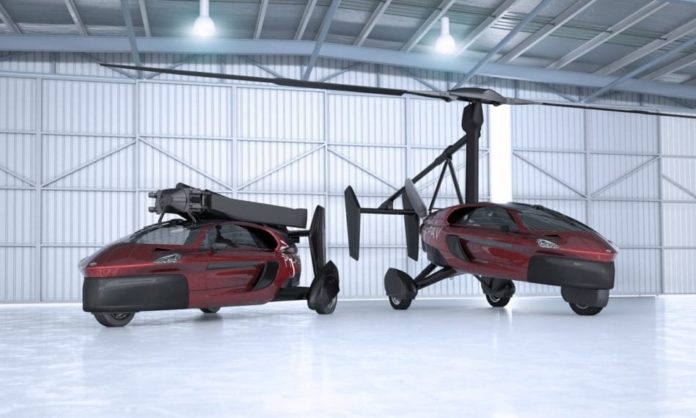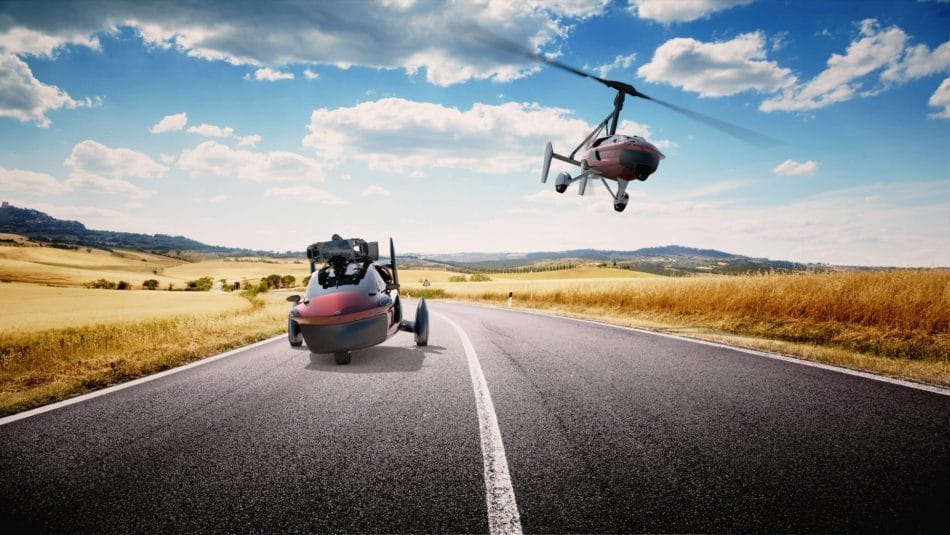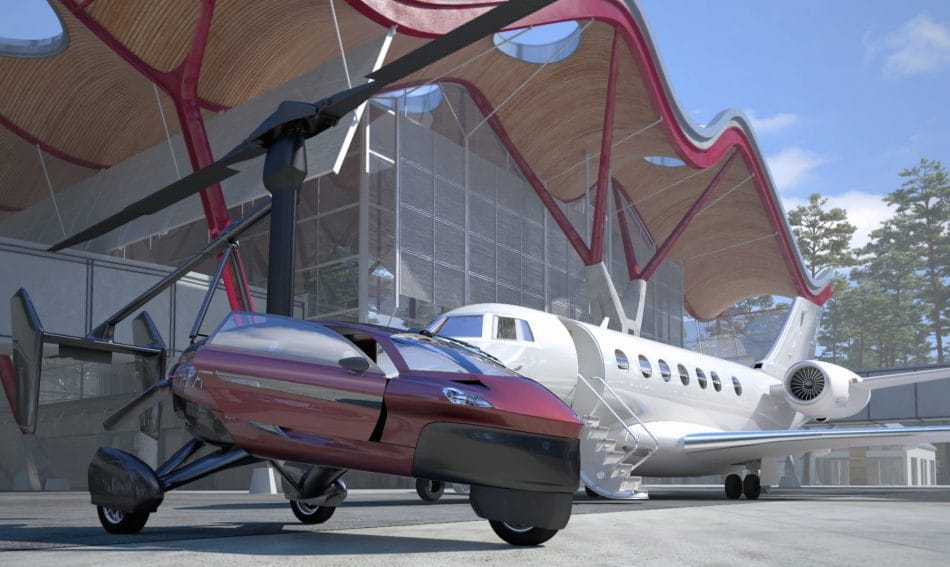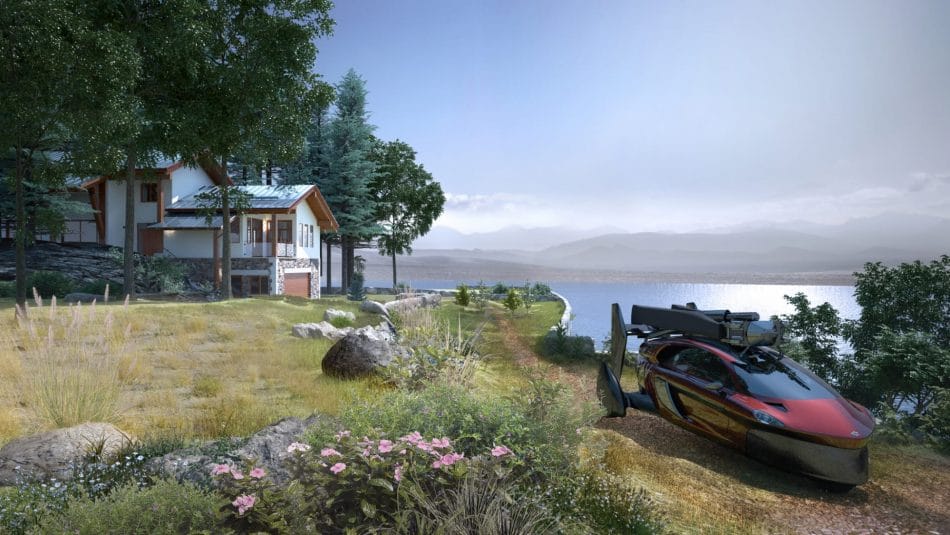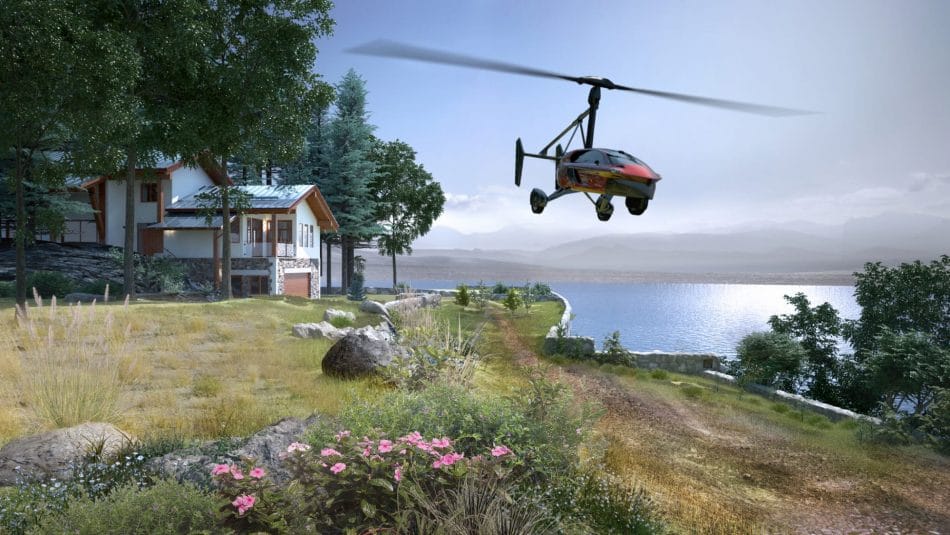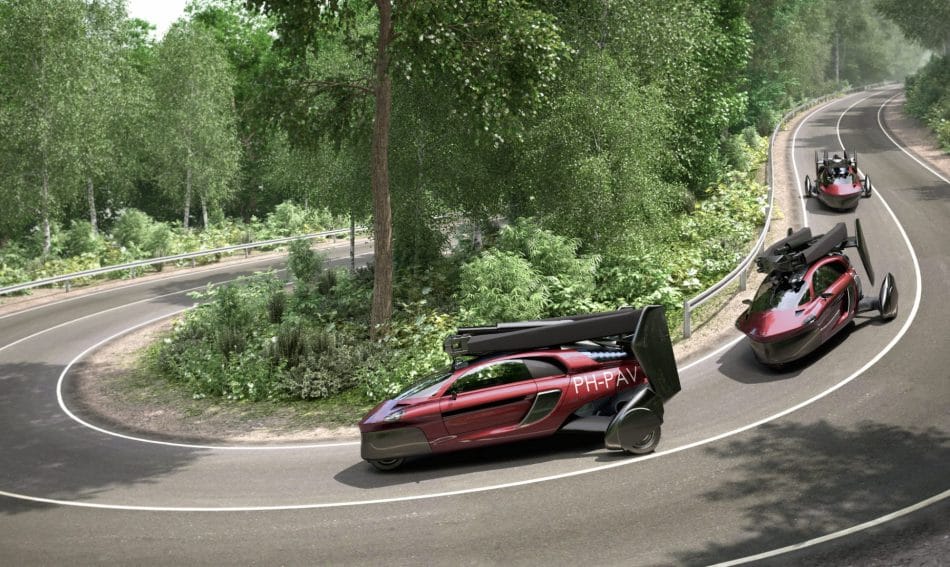A CAR THAT FLIES, A PLANE THAT DRIVES.
Self-driving cars, hoverboards, and jetpacks are becoming less interesting as PAL-V International B.V, a Dutch company known for making roadable aircrafts, starts selling its first commercial flying car models, the “PAL-V Liberty Pioneer” and “PAL-V Liberty Sport.” Both are three-wheeled motorcycles that turn into gyrocopters. This means that these cars can go both on the ground and in the air. The base model is the Liberty Sport, while the Liberty Pioneer has more expensive trim.
PAL-V, the company that makes the new two-seater flying vehicle, has been working on it for almost ten years to make sure it meets all safety standards set by regulatory bodies around the world and to avoid common pilot mistakes during production. Now, there’s no doubt that the technology for flying cars has reached a point where the PAL-V flying car sale can start.
“After years of hard work, beating the technical and qualification challenges, our team succeeded in creating an innovative flying car that complies with existing safety standards, determined by regulatory bodies around the world,” says the company’s CEO Robert Dingemanse.
He adds:
“This truly is a pivotal time in aviation and mobility history.”
After almost a decade of hard work, the company has proven beyond any doubt that flying cars are the future. They will make getting around easier and faster, especially in places like Lagos, Nigeria, where traffic jams happen every day. Even though PAL-Vs need a runway about 500 feet long to take off and 100 feet long to land.
The PAL-V Liberty Pioneer and PAL-V Liberty Sport gyrocopters, which have gasoline engines, are made to fly at low altitudes, below 4,000 feet. The light weight of both PAL-V vehicles gives them a top speed of up to 180 km/h (112 mph) on land and in the air. This means that the engine of the flying car is light.
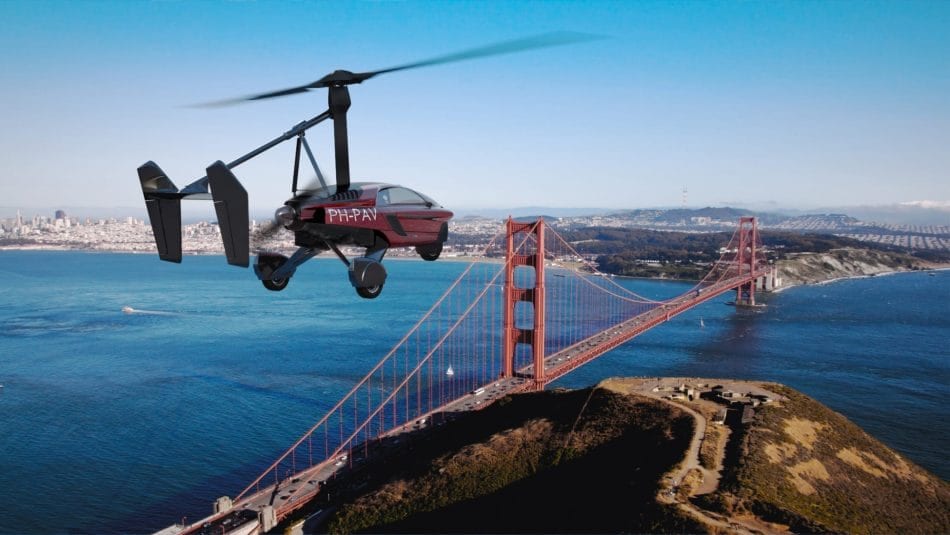
When it’s on the ground, it looks more like a regular sports car, and when it’s in the air, it looks like a helicopter. Advanced gyrocopter technology makes it so that the rotor blades and tail fold up automatically when it lands and can be switched to a driving mode with the push of a button. Unusually, it turns like a normal motorcycle by leaning to the side. This was first done by the Carver vehicle, which was also made by a Dutch company.
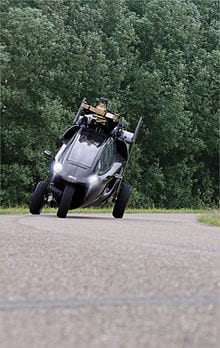
The PAL-V flying car is about the same size as a regular car. So, it fits right in with regular traffic, but it also gives people a new way to get around. But the owner will probably need a sport pilot certificate and a license to drive.
Check out the pictures of the flying cars below:
Watch Video below
PAL-V flying car specifications (EU)
DRIVE MODE EU
| Max Speed | 160 km/h |
| Top speed acceleration (0-100 km/h) | <9 seconds |
| Engine power | 100 hp |
| Fuel economy: | 7.6 l/100km |
| Range: | 1315 km |
FLIGHT MODE EU
| Economic cruise speed | 140 km/h |
| High cruise speed (90% range) | 160 km/h |
| Maximum speed | 180 km/h |
| Min speed for level flight | 50 km/h |
| Engine power: | 200 hp |
| Maximum operating altitude | 3500m |
| Useful load | 246 kg |
| Take-off roll (MTOW, MSL) | 180m |
| Take-off distance (+ 15m obstacle clearance) (MTOW***, MSL****) | 330m |
| Landing roll distance | 30m |
| Fuel economy | 26 l/h |
| Max Range (with ½ hour reserve fuel*, MTOW) | 400 km |
| Max Range (with ½ hour reserve fuel, single person operation, MSL) | 500 km |
| Max endurance (with ½ hour reserve fuel, MTOW) | 4.3 hours |
- ½ hour reserve fuel is 100-150 km of fuel left for driving
*** Maximum Take-off Weight
**** Mean Sea Level
TECHNICAL SPECIFICATIONS EU
| Capacity | 2 persons |
| Mass Empty | 664 kg |
| Maximum Take-Off Weight (MTOW) | 910 kg |
| Fuel type | Euro 95, Euro 98, E10 ** |
| Fuel capacity | 100 l |
| Dimensions Drive-mode | 4m L x 2m W x 1.7m H |
| Dimensions Flight-mode | 6.1m L x 2m W x 3.2m H (Rotor diameter is 10.75m) |
| Maximum baggage load | 20 kg |
** Unleaded automotive fuel, with max. 10% ethanol (E10), EN 228 specification, min RON 95 (min AKI 91)
PAL-V flying car specifications (US)
DRIVE MODE US
| Max Speed | 100 mph |
| Top speed acceleration (0-62 mph) | <9 seconds |
| Engine power | 100 hp |
| Fuel economy: | 31mi/gallon |
| Range: | 817 mi |
FLIGHT MODE US
| Economic cruise speed | 87 mph |
| High cruise speed (90% range) | 100 mph |
| Maximum speed | 112 mph |
| Min speed for level flight | 31 mph |
| Engine power | 200 hp |
| Maximum operating altitude | 11,480 feet |
| Useful load | 542 lbs |
| Take-off roll (MTOW, MSL) | 590 feet |
| Take-off distance (+ 15m obstacle clearance) (MTOW***, MSL****) | 1,082 feet |
| Landing roll distance | 98 feet |
| Fuel economy | 6.9 gallons/hour |
| Max Range (with ½ hour reserve fuel*, MTOW) | 248 mi |
| Max Range (with ½ hour reserve fuel, single person operation, MSL) | 310 mi |
| Max endurance (with ½ hour reserve fuel, MTOW) | 4.3 hours |
- ½ hour reserve fuel is 62-93 miles of fuel left for driving
*** Maximum Take-off Weight
**** Mean Sea Level
TECHNICAL SPECIFICATIONS (US)
| Capacity | 2 persons |
| Mass Empty | 1.413 lbs |
| Maximum Take-Off Weight (MTOW) | 2,006 lbs |
| Fuel type | Premium or Super Unleaded gasoline** |
| Fuel capacity | 26.4 gallon |
| Dimensions Drive-mode | 13.1f L x 6.6f W x 5.4f H |
| Dimensions Flight-mode | 20.1f L x 6.6f W x 10.5f H (Rotor diameter is 35.3f) |
| Maximum baggage load | 44 lbs |
** Unleaded automotive fuel, with max. 10% ethanol (E10), EN 228 specification, min RON 95 (min AKI 91)

